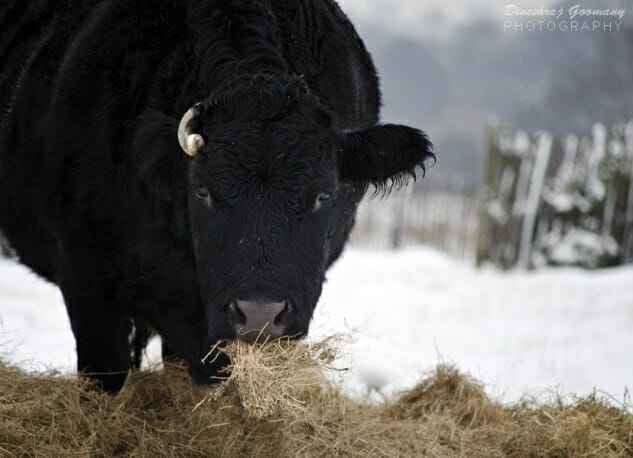Warming Signs: Corralling Cattle Emissions Could Help Save the Planet

Last week, I talked about how some ruminant animals, like cows, are contributing to climate change. Now it’s time for the good news—how farmers and scientists are limiting those emissions. There are two main ways: changing what goes in, and managing what comes out.
![]()
What Goes In …
Changing what cows eat is one of the best ways to reduce emissions from enteric fermentation (the digestion process).
Grass vs. Gas
Let’s start with the simple stuff: Cows already eat grass, so why reinvent the wheel? Danish scientists have been working on a super grass that cows could digest more efficiently—thus reducing the number of burps necessary. As a bonus, they also hope this grass will help cows produce more milk. But more grass does not always translate into less gas; eating non-Danish grass (and hay) usually makes a cow gassier than a diet heavier in grain.
Feeling a Little Italian
Adding a little seasoning might have a big effect, though. Researchers in Wales found that adding garlic to a cow’s food could cut the gas they produced in half. And, because scientists apparently have no concern for cows’ breath, they tried onions next. It worked, for much the same reason as the garlic; the two share similar chemical properties. However, the next step was making sure the onion taste didn’t permeate the milk; luckily, researchers found that a limited amount was easier to stomach in milk taste tests.
Rebrand?
Although 3-NOP, a chemical compound, has something of a branding problem—the name’s just not very catchy!—adding it to feed has been shown to reduce methane emissions by 30 percent, without affecting the cow’s weight or milk production.
Nautical by Nature
By far the most effective solution, though, has been a surprise contender: Seaweed. When a certain species of seaweed made up only 2 percent of a cow’s diet, it reduced emissions by a stunning 99 percent in the lab and as much as 70 percent in field tests. It would seem that a compound called bromoform, found in the red species Asparagopsis taxiformis, more or less eliminates the production of methane during digestion.
The next question, of course, is how livestock farmers can get enough of this kind of seaweed to feed the world’s cattle. Globally, seaweed farmers produce about 27 million tons of the algae each year, although that number includes thousands of different types, not just A. taxiformis.
But this news gives a whole new meaning to surf and turf!
![]()
-

-

-

-

-

-

-

-

-

-

-

-

-

-

-

-

-

-

-

-

-

-

-

-

-

-

-

-

-

-

-

-

-

-

-

-

-

-

-

-

 Image: Courtesy of
Image: Courtesy of 






































